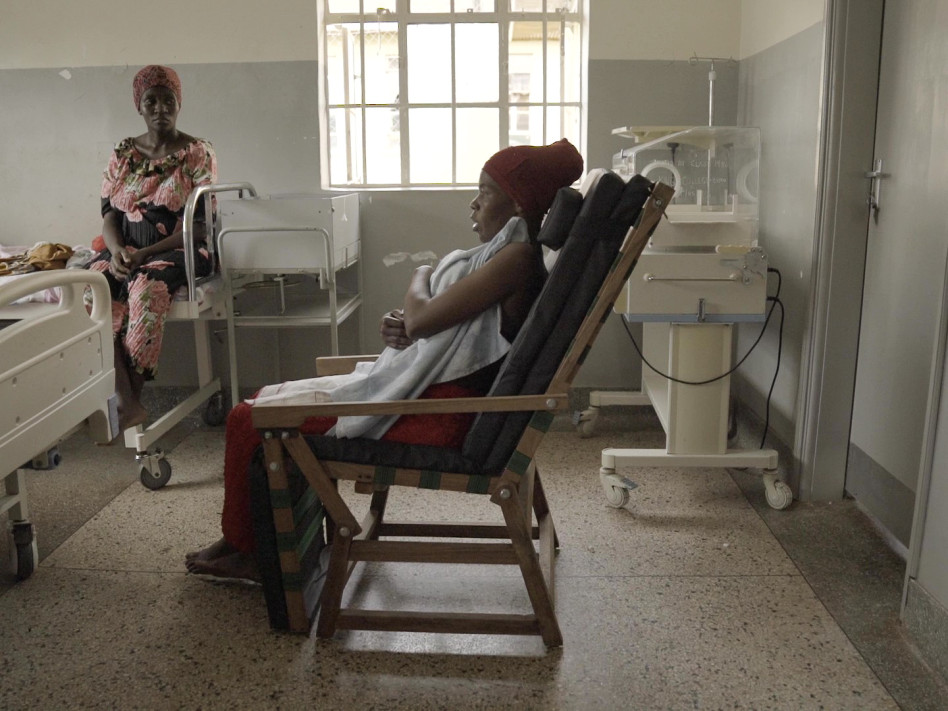The Kangaroo Chair, a chair designed for practicing Kangaroo Mother Care in low resource hospitals. This chair is designed for mothers to practice Kangaroo Mother Care with their preterm babies for eight hours a day. It is the end result (and final update unfortunately) of our 10 week-long adventure in Kampala, where we worked together with Design Without Borders on solutions for these mothers. It was an intense but very interesting project, and it’s safe to say we learned a lot from them.
The design
The chair’s design and mechanism is based on a chair that you might recognise: The Zero Gravity Chair. Our research showed that the zero gravity position, a position where your body weight is equally distributed throughout the seating surface, is the best position to practice KMC. First, the mothers legs are elevated to increase circulation and reduce the postpartum swelling in the feet and legs that mothers often experience after giving birth. Second, the baby is in an inclined position of 30-40 degrees which helps the baby breathe. Third, the mother is lying down in a position where she is comfortable to sleep in and her body weight is distributed in a way to avoid pain when sitting in a position for an extended amount of time. Finally, the Kangaroo Chair tackles the lack of space, which is a big barrier in the practice of KMC in low resource hospitals. The lack of designated space for KMC in the hospitals we were doing research in caused mothers to be discharged earlier than desired. It made mothers practice KMC on benches in other hospital areas and discouraged mothers to practice KMC eight hours every day. The Kangaroo Chair has two positions, an upright sitting position and a lying position to sleep or rest. The chair is a replacement for the huge beds and chairs that are currently in use.
Future perspective
To make this solution widely available in hospitals, a redesign of the original chair was necessary. The original zero gravity chair is currently made in China and imported to Uganda, it was not designed to be used in hospitals. We redesigned the chair completely to make the manufacturing possible by local manufacturers.
We validated the chair in various hospitals to see what adaptations will be made in further iterations. Now that we’ve nailed the dimensions for the mechanism to work effortlessly, Design Without Borders is going to test the chair in stainless steel and aluminium, which are better suited materials for hospital use and make the production of the chair possible on a larger scale.
The other concepts are also still being worked on by the Design Without Borders team in Kampala. We are extremely grateful that we were able to work in collaboration with them on this project. We were able to learn from their past experiences in various industries. Make sure to check them out here!

